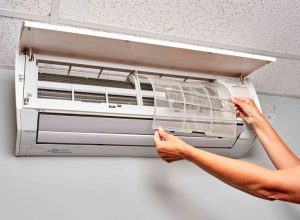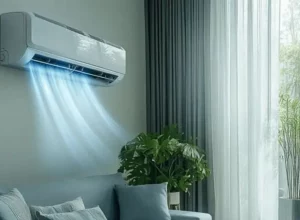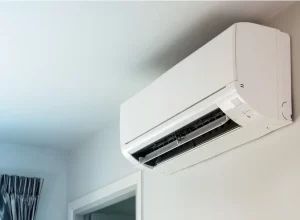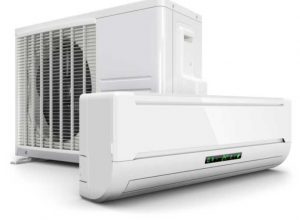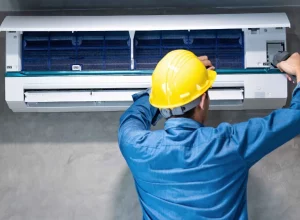Contents
- 1 Smart Air Conditioners: Features That Make Cooling Smarter
- 2 Connectivity and Remote Control
- 3 Energy Efficiency
- 4 Intelligent Climate Control
- 5 Voice Control Integration
- 6 Advanced Filters and Maintenance Alerts
- 7 Integration with Smart Home Systems
- 8 Data Analytics and Insights
- 9 Cost and Considerations
- 10 Conclusion
Smart Air Conditioners: Features That Make Cooling Smarter
Smart air conditioners represent the next generation of cooling systems, leveraging advanced technology to provide enhanced functionality, energy efficiency, and user comfort. By integrating Internet of Things (IoT) capabilities, these systems not only regulate temperature but also enable users to control their environment remotely. Below is a detailed examination of key features that characterize smart air conditioning systems.
Connectivity and Remote Control
One of the most significant features of smart air conditioners is their ability to connect to home Wi-Fi networks. This connectivity allows users to control their air conditioning units using smartphones or tablets through dedicated mobile applications. For instance, a user can adjust the temperature, change modes, or set timers from anywhere in the world, which is particularly beneficial for those who may forget to turn off the air conditioner before leaving home.
Energy Efficiency
Many smart air conditioners are designed with energy-saving features, such as inverter technology. Inverter-enabled units can adjust their cooling output based on current room conditions rather than simply turning the compressor on and off. This continuous operation leads to reduced energy consumption and, consequently, lower utility bills. Moreover, smart thermostats can learn user habits and preferences to optimize energy usage further. For instance, if the system learns that users typically return home around 6 PM, it can adjust the cooling settings to ensure a comfortable temperature when they arrive.
Intelligent Climate Control
Smart air conditioners often include sensors that monitor indoor and outdoor conditions. These sensors can detect humidity and temperature changes and automatically adjust the cooling output accordingly. Some models even feature geofencing technology, which uses the user’s smartphone location to determine when to power on or off. For example, if the user leaves a predefined radius around their home, the air conditioner can switch off to save energy and then activate shortly before their return, ensuring optimal comfort without unnecessary energy expenditure.
Voice Control Integration
Compatibility with voice assistant technologies, such as Amazon Alexa or Google Assistant, is another hallmark of smart air conditioners. Users can engage their air conditioning units hands-free by issuing voice commands. For example, a simple request like, “Set the living room air conditioner to 72 degrees,” can initiate direct adjustments without the need for smartphones or remotes. This feature enhances convenience, especially for those with mobility challenges.
Advanced Filters and Maintenance Alerts
Smart air conditioners also come equipped with advanced filtration systems that enhance air quality. Many units incorporate HEPA filters designed to capture fine particles, allergens, and pollutants from the air, significantly improving indoor air quality. Furthermore, these systems often monitor filter status and notify users when it’s time to clean or replace them. Regular maintenance helps in retaining energy efficiency and prolonging the unit’s lifespan.
Integration with Smart Home Systems
Smart air conditioners can seamlessly integrate into larger smart home ecosystems, enhancing home automation. For instance, users can create schedules or set scenes that coordinate multiple devices – such as lights, thermostats, and air conditioning – for a unified experience. Through various interfaces, users can create scenarios such as “Away Mode,” where lights, heating, and cooling adjust based on the absence of household occupants.
Data Analytics and Insights
Modern smart air conditioners often include data analytics capabilities. These systems collect usage data and provide insights into consumption patterns. Users can track energy usage over time and receive personalized tips on improving efficiency. For example, if data reveals frequent use of cooling during peak hours, users may adjust their habits or settings accordingly to take advantage of lower utility rates during off-peak times.
Cost and Considerations
Investing in a smart air conditioner typically comes with a higher upfront cost compared to traditional units. However, the long-term savings derived from enhanced energy efficiency and reduced utility bills often offset this initial investment. Additionally, the convenience and comfort offered by smart features can justify the expenditure for many users.
| Feature | Description | Benefits |
|---|---|---|
| Connectivity | Wi-Fi capability for remote access. | Control from anywhere using mobile apps. |
| Energy Efficiency | Inverter technology and smart thermostats. | Lower utility bills, optimized cooling. |
| Intelligent Control | Sensors and geofencing functionality. | Automatic adjustments based on user behavior and conditions. |
| Voice Control | Integration with voice assistants. | Hands-free operation, increased convenience. |
| Air Quality Filters | Advanced filtration systems with maintenance alerts. | Improved indoor air quality, reduced allergens. |
| Smart Home Integration | Coordination with other smart home devices. | Enhanced home automation and efficiency. |
| Data Analytics | Usage tracking and insights. | Personalized energy-saving recommendations. |
Conclusion
Smart air conditioners are not only a step toward a more comfortable living environment but also contribute to energy conservation efforts. With their range of advanced features, they enable users to have greater control and insight into their energy usage while ensuring optimal climate conditions. As technology continues to advance, the capabilities of smart air conditioning systems are likely to expand, offering even more innovative ways to keep cool in an increasingly interconnected world.

